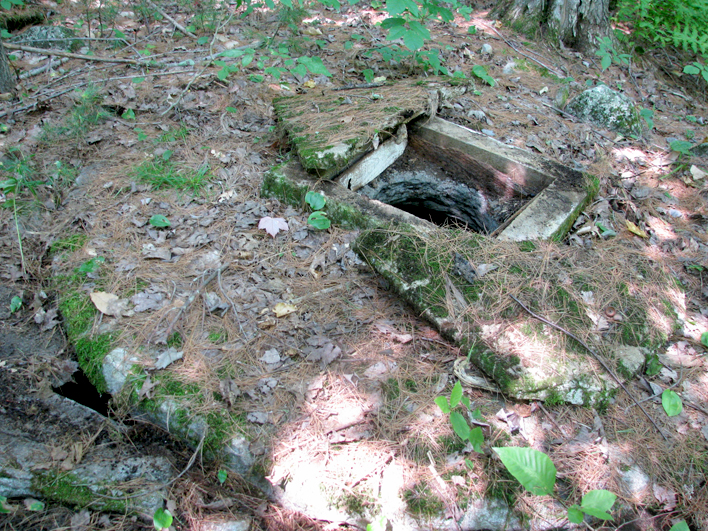Early wells found on old Sweden homestead sites were dug using hand shovels. They were typically lined with stone to prevent collapse and covered with stone, wood, or, after the mid 19th century, concrete. Most of these wells have been abandoned and, over time, have collapsed or become filled in with organic debris. Well covers often are absent due to decomposition or scavenging. Thanks to the owner of one of these old Sweden properties, we have these photos and a description of a large well-preserved dug well. Description of well:
| Dug Wells of Early Sweden, Maine | |||
|
|
General view of well area. Edge of the 6-foot diameter round cover stone seen in the lower left of the image. | |||
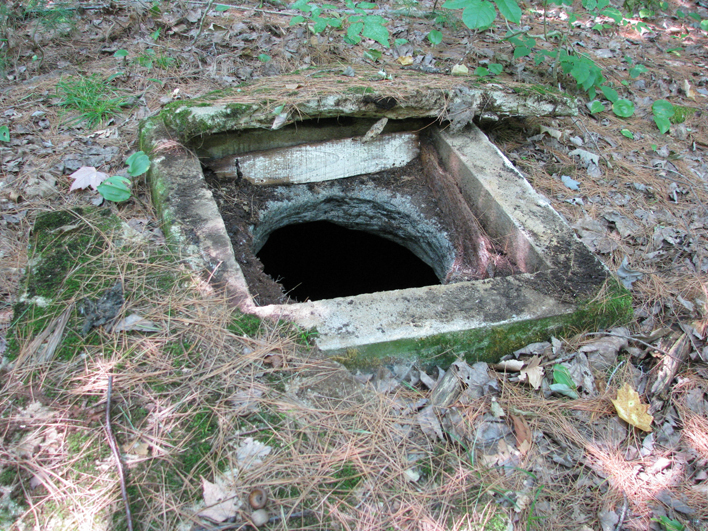 | Closer view of the 16-inch-diameter circular opening. Note that the concrete structure surrounding the opening may be indicative of a well modified later in the 19th century or early 20th century. | |||
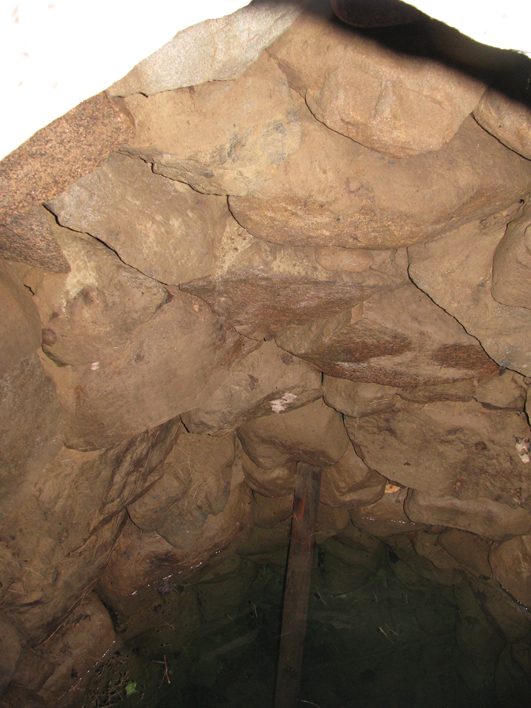 | Looking
into the well showing the stone wall. Although not easily seen in this
photo, there is water in the well shown in the bottom of this
photograph. The metallic-looking object shown in the photo is yet to be investigated. It may be an iron pipe; if so, it may be another sign that the well has been modified over time. The pipe may have extended to the house and a pump (hand or electric) used to draw water from the well. These pipes usually indicate an early 20th century modification (see link). | |||
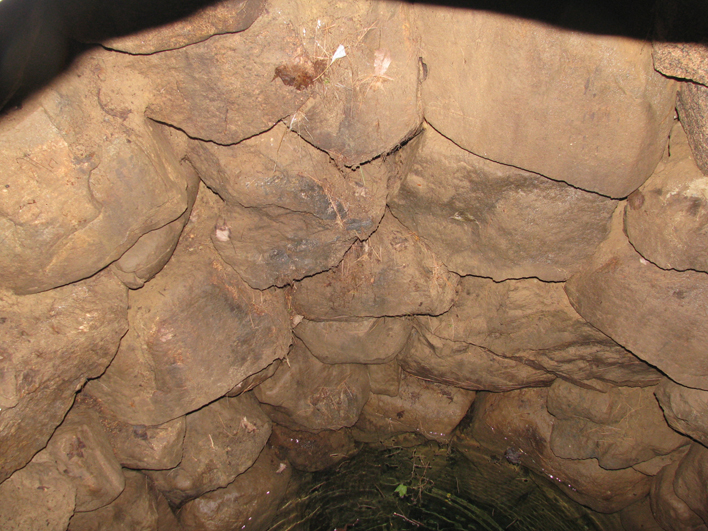 | Closer view of inner stone wall. | |||
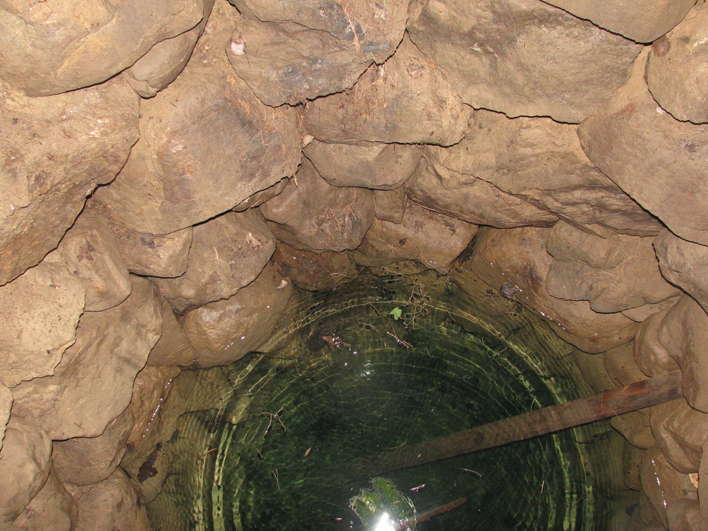 | Another view of the inner stone wall that more clearly shows the water level. | |||
For more information about dug well (and other stone structures) in the northeast, check out this link. | ||||
| Return to main page. | ||||
